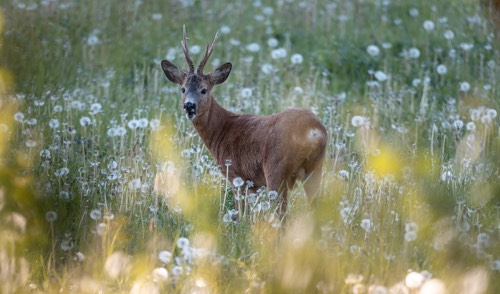
Wild game should be properly cleaned in the field, an important first step in the safety of the end product.
Food safety applies to hunting wild game, too
K-State's Blakeslee shares food safety tips when harvesting wild game
Nov. 1, 2022
MANHATTAN, Kan. — Safety is an important aspect of hunting, and that includes food safety. How meat is handled at harvest, preservation and preparation are key to flavor and safety of the end product.
Kansas State University food scientist Karen Blakeslee said the first step of a properly harvested animal is cleaning it in a timely manner, then chilling the carcass on ice for transport.
Tips for harvesting wild game in the field include:
- Wash your hands.
- Use plastic gloves.
- Have the tools needed to handle the kill.
- The sooner the animal is dressed, the better the meat will be.
- Take plenty of ice to chill the inside of the carcass quickly.
Blakeslee recommends having an appointment with a meat processor prior to the hunt. Or, if the hunters are capable of processing and fabricating the carcass, do it soon after the hunt is done.
“It is important to identify animals, such as deer and elk, that have signs of chronic wasting disease and know if any animals have been found in the area with CWD where you are hunting,” Blakeslee said. “Animals with CWD have symptoms of weight loss, stumbling, tremors, lack of coordination and other symptoms.”
She suggests that hunters review the Kansas Department of Wildlife and Parks website for the latest information on CWD. Do not consume any meat from animals that test positive for CWD, Blakeslee said.
She added the best form of preservation is freezing, but wild game can also be smoked, dried, corned, canned or made into sausage. Fish also may be pickled or canned.
Other than those that test positive for CWD, wild game carcasses should be handled similarly to other meat products when they are being prepared for consumption.
Blakeslee, who also is coordinator of K-State’s Rapid Response Center for food science, publishes a monthly newsletter called You Asked It! that provides numerous tips on being safe and healthy.
More information is also available from local extension offices in Kansas.

